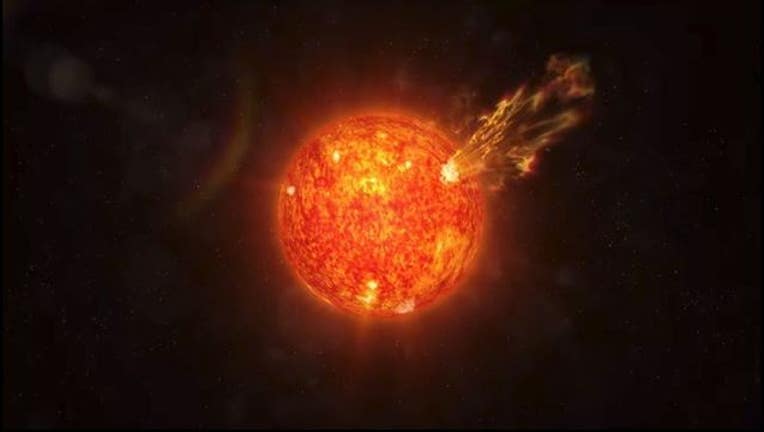NASA finds evidence of 'interplanetary shock' for first time

An animation of a coronal mass ejection pouring off of the sun. This is one such way that 'interplanetary shocks' are created...
KMSP - 
Data from the Fast Plasma Investigation aboard MMS shows the shock and reflected ions as they washed over MMS. The colors represent the amount of ions seen with warmer colors indicating higher numbers of ions. The reflected ions (yellow band that appears just above the middle of the figure) show up midway through the animation, and can be seen increasing in intensity (warmer colors) as they pass MMS, shown as a white dot. (Credit: Ian Cohen)
NASA continued: "Looking at the data from Jan. 8, the scientists noticed a clump of ions from the solar wind. Shortly after, they saw a second clump of ions, created by ions already in the area that had bounced off the shock as it passed by. Analyzing this second population, the scientists found evidence to support a theory of energy transfer first posed in the 1980s."
An interplanetary shock, which emanates from the Sun, is a type of "collisionless shock," where particles transfer energy through electromagnetic fields as opposed to bouncing into one another, NASA added.
"These collisionless shocks are a phenomenon found throughout the universe, including in supernovae, black holes and distant stars. MMS studies collisionless shocks around Earth to gain a greater understanding of shocks across the universe," the space agency continued.
The researchers behind the observation hope that additional instances are spotted by the MMS that will give them more detailed looks at these interplanetary shocks.
NASA has released a video describing the charged particles, also known as the solar wind, in greater detail.

